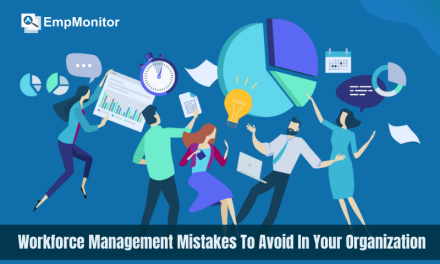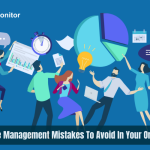Keeping high employee retention rates is difficult for many organizations. It can be expensive & time-consuming to find good talent as it’s a competitive process.
Engagement is where it all begins if you want to boost employee retention. Employee retention is higher if they feel a sense of belonging and pride in the business.
A supportive management style, training opportunities, and appreciative workplace culture can increase employee engagement and retention rates. But what particular areas should you focus on?
Here are 8 vital factors if you’re serious about improving employee engagement and retention.
How to Improve Employee Engagement and Retention
Before checking out employee engagement and retention strategies, let us understand employee engagement and retention.
What is Employee Engagement and Retention?
Employee Engagement– The degree of zeal & commitment to the business and their employment is known as employee engagement. An engaged employee is invested in the success of their business and is motivated to deliver their best work.
Additionally, they are more likely to continue working for their current job for an extended time.
Employee Retention– The capacity of a business to retain its employees over the long term is known as employee retention. A high employee retention rate indicates that employees are satisfied and are less inclined to leave the business.
8 Crucial Elements to Boost Employee Engagement and Retention in Your Company
1. Support Work Life Balance
Maintaining employees’ motivation and engagement requires a healthy work-life balance.
Human resources experts have observed that employees who spend more time at work are more likely to experience burnout and a decline in performance than those who believe they have the leisure to pursue their personal interests.
The problem is that a lot of people find it demanding to balance their personal and professional lives.
What can you do, then, to promote the health and well-being of your employees?
Providing employees with acceptable duties while avoiding overburdening them is one approach. Employees emare able to effectively complete their assignments in this way without being required to work past their regular hours.
Initiate by providing them with free supplemental services like music therapy, fitness classes, and lessons on good nutrition. These kinds of exercises can support your staff members in maintaining their emotional, physical, and mental well-being.
Furthermore, the nature of work has evolved, and more businesses are moving toward remote and hybrid work arrangements. Giving your staff flexibility will enable them to balance their obligations at home and work.
Additionally, your team members will typically be more devoted to your organization if you shorten commuting times and permit time off for personal commitments.
By providing flexible options, you will demonstrate to your staff how much you respect them.
2. Establish a Strong Onboarding Process
The onboarding procedure is frequently the employee’s first contact with a company. Neglecting new hires can result in low engagement and retention since they will feel unsure about their place in the company.
Positive onboarding experiences increase an employee’s likelihood of remaining with the organization for three or more years.
By creating a thorough onboarding procedure, your new and old employees will perform successfully, be assured of their abilities, and feel secure about their position in the company hence solving issues in employee engagement and retention.
3. Provide Competitive Salary and Benefits to Retain Engaged Employees
The best way for businesses to improve employee retention is through salary and perks. Organizations can improve employee retention by offering competitive pay and benefits.
Despite having a real zeal for their job, some people may look for employment elsewhere for a higher salary.
Although having money doesn’t always mean being happy, higher-paid employees typically have higher job satisfaction and lower levels of stress than their lower-paid colleagues.
Employee engagement rises when morale among employees rises. Performance may be increased, and talent turnover rates can be drastically decreased by paying your employees a competitive wage and providing them with benefits they value.
4. Communicate Regularly & Keep Your Employees Informed
Make sure to keep up consistent communication with every team member. It will keep them informed of company affairs, and they will feel more like a part of the business and their coworkers as a result.
Employee engagement and retention can suffer hugely from rumors and uncertainty, and many executives ignore letting their staff know when there are critical organizational changes.
Employees may start looking for other jobs in advance to avoid what they feel may be an insecure workplace or a change in leadership, which could result in a loss of talent.
By making company challenges clear, keeping employees informed can lower high turnover.
5. Provide Opportunities for Training and Development
Give your staff members opportunities to grow professionally. This will increase their commitment to their jobs and careers and boost their productivity.
More than just filling training gaps, providing growth opportunities for employee engagement solutions are critical to organizational growth. It is the responsibility of the management to meet with team members, examine career development objectives, lay out clear growth lanes, and offer prospects for advancement within our organizations.
6. Give & Take Feedback Regularly
Asking your staff for their views is one of the finest techniques for measuring employee engagement. Gathering feedback can motivate employees since it gives them a sense of empowerment over their work, expectations, and business culture, especially when they see their suggestions taken seriously and put into practice.
Receiving frank feedback from team members can provide you with a better understanding of the issues in employee engagement and retention. Also, it may even point up areas where business operations need improvement.
Additionally, give regular analyses and point out areas that need improvement, so they know higher-ups are paying attention to what they’re doing.
7. Acknowledge and Reward Good Work
Poor acknowledgment is one of the main reasons for low employee engagement. Employees will begin to feel worthless and invisible if you treat them like cogs in a machine. They’ll probably quit soon to join a business that respects them for who they are.
In fact, according to research, the best employees are the first to quit if they don’t get adequate credit.
Ensure that you recognize the contributions of your team members. They’ll be inspired and engaged as a result of this. To express your gratitude, you can give rewards, gift cards, or just praise in public.
Giving regular acknowledgment to employees who go above and beyond the call of duty or contribute value to the business is a common employee engagement and retention tactic. Their colleagues get inspired to work harder to acquire the same level of recognition when they see that your company appreciates a job well done.
8. Monitor Employee Engagement and Provide Right Tools & Technologies to Work
Maintaining proactive employee engagement and retention strategies is the best technique to reduce high turnover. Asking employees or conducting routine questionnaires and pulse surveys are also effective ways to gauge employee engagement.
Business leaders may revise their strategy and spot potential issues causing talent to leave by knowing the current level of employee engagement and instructing HR managers to take relevant measures regarding employee engagement.
Make sure your workforce gets the resources necessary for success if employee engagement and retention are vital to you.
Your business management practices will determine the solutions you require. For instance, teams in an office setting will have different needs than remote teams.
What kind of equipment does your team need? Find centralized software that makes their daily duties more efficient.
We strongly recommend using EmpMonitor, a brilliantly integrated business and technological solution with a special set of workforce monitoring capabilities and a mission to empower employees.
By offering greater transparency, thorough overview, and real-time data in one location, you can build high-performing teams for your business.
Request a free demo of EmpMonitor to learn more or start your free trial now-
Read More-
Employee Engagement is the New Trend you Need to Catch up in 2023
Ultimately, robust cultures where employees support one another’s growth are necessary for organizations to be truly resilient for the future of work. Mentors and peer accountability will be the standard for successful businesses rather than a zero-sum game.
You may increase employee engagement and retention by using the tactics listed here. These tactics will help create a solid, effective, and engaged workforce.



















